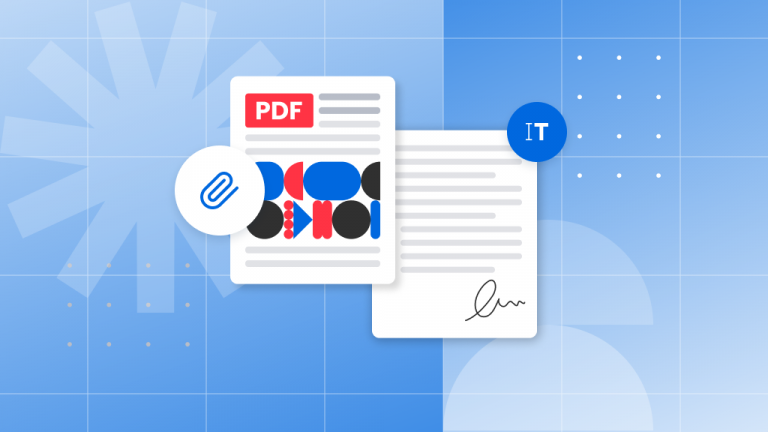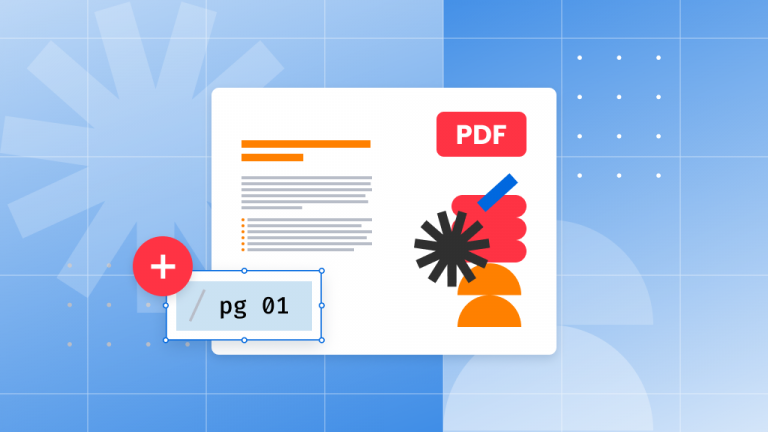
Do you want your PDF documents to stand the test of time? Imagine you’ve created an important document for your business – a document including important client information, or your business’ financial records. Fast forward to 2044 – in twenty years, will your document open? Will it look the same? If you archive your PDF document, then it definitely will!
What does it mean to archive PDF documents? Does it mean preserving documents in a time capsule and burying them underground? Or keeping them stored in dusty library bookshelves? Don’t worry, it’s less work than that!
Archiving your PDF ensures that the content and layout of your document will be preserved over the years. So, you’ll be able to open and view important business documents even ten years in the future. Unlike with paper documents, PDFs will actually be legible.
Keep reading to find out what exactly it means to archive PDF documents, and how you can do it.
The History of PDF Archiving: PDF/A

PDF was designed as a universal format, intended to preserve document layout and content so documents could be viewed on any device or operating system. Content in PDF documents is usually device-independent, which means that it doesn’t depend on a specific resolution, color system, or operating system. This way, PDFs will be able to withstand technological advances in printers and monitors even long into the future. So, you can say PDFs are ahead of their time!
Although the PDF is universal, it did undergo changes and improvements over the years. Because of this, it was necessary to have another format that was more stable than the evolving PDF and could truly ensure long-term preservation.
In comes PDF/A – the internationally accepted standard for long-term electronic archiving.
Check out our full blog post on PDF/A conversion here.
What is PDF Archiving?

PDF/A is essentially the format used to archive PDFs. To archive PDF documents refers to saving PDFs in a manner that preserves their visual appearance over the years, regardless of the tools and systems used for creating, storing or rendering the files. Kind of like using Botox to hide wrinkles – except that this actually works!
Basically, all of the information necessary for displaying the PDF document in the same manner, even in years to come, is embedded in the file itself.
Essentially, PDF Archiving does a few things:
- Preserves the layout and visual appearance of PDF files
- Preserves the original content of documents
- Ensures that PDFs can be stored without loss of quality or becoming corrupt
- Guarantees that PDFs can be opened and viewed on newer operating systems or devices
Like your favorite pair of jeans, PDF documents stand the test of time. Dust them off, try them on, and they fit just like they did when you first got them!
Types of Archiving Formats
“Wait – there’s more?”
Yes, just one more thing.
Although PDF/A is the format for PDF archiving, there are different types of PDF/A levels. PDF/A comes in different flavors, if you will.

There are different conformance levels and version of PDF/A format:
1. PDF/A-1b – Level B (basic) conformance: For Document Appearance
Level B conformance includes the basic requirements to ensure the reproduction of a document’s appearance.
2. PDF/A-1a – Level A (accessible) conformance: Advanced Options
Level A conformance includes all Level B requirements with advanced features intended to improve a document’s accessibility, such as:
- Language specification
- Hierarchical document structure
- Tagged text spans and descriptive text for images and symbols
- Character mappings to Unicode
In addition – there are newer versions of A and B conformance levels.
3. PDF/A – 2 (a/b/u): New Options
Part 2 of the standard was created to include a variety of new features such as:
- JPEG 2000 image compression
- Support for transparency effects and layers
- Embedding of OpenType fonts
- Provisions for preserving digital signatures
- The option archive sets of documents with a single file
4. PDF/A – 3 (a/b/u): Even More Options!
An even newer format allowed the embedding of arbitrary file formats (such as XML, CSV, CAD, word-processing documents, spreadsheet documents, and others) into PDF/A conforming documents.
This allows you to choose the format that best suits your archiving needs!
How to Archive PDF
As we mentioned earlier, you won’t need a time capsule or shovel to archive your PDF files. All you need is a handy PDF converter like Soda PDF (Did you guess that was coming?)!
Archiving your PDF is as easy as converting it into PDF/A format.
Here’s how to convert to PDF/A using Soda PDF:
1.Open your PDF file and go to the Create & Convert tab. Under Convert, select PDF to PDF/A.

3. Once you click EXPORT, your PDF will transform into a PDF/A.
Now that you’ve discovered how to archive PDF documents, you can stop worrying about your old documents wasting away. With PDF/A, you can ensure that your PDF files will keep aging well!
Download Soda PDF to have your very own PDF time capsule!



